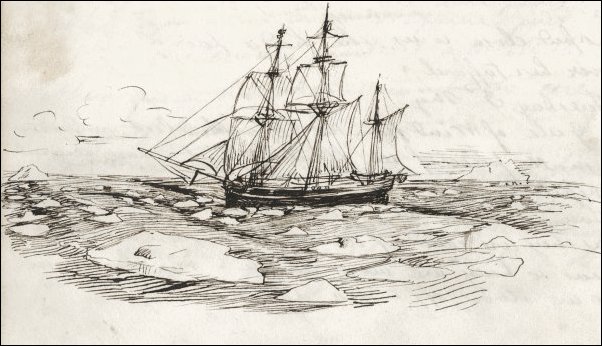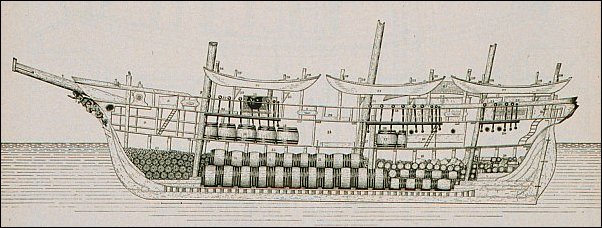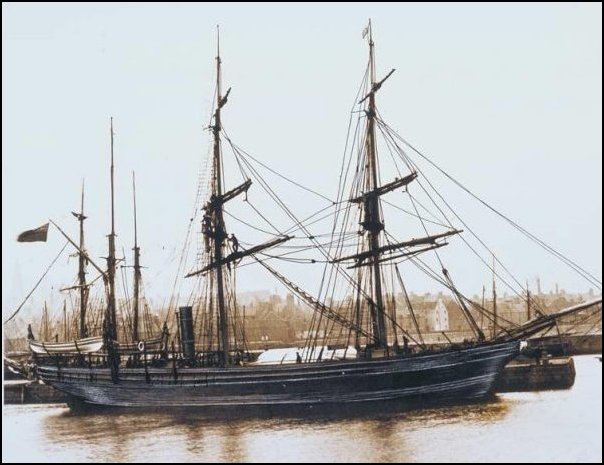In
the early days, of the Greenland fishery, ships were often of
indifferent structure and could not penetrate far into the ice.
By
the the early 1800s the whale stocks were in decline and whaling
ships had to be able to move far into the ice if they were to
take a profitable harvest. This demanded much better ships because,
once in the ice, they could be trapped and had to be able to resist
the pressure and blows of the ice. These modern ships, of three
to hour hundred tons displacement, were very substantially built
and yet capable of fast sailing. The hulls of the ships usually
had an extra layer of 2 inch thick oak planks and sometimes even
two extra layers at the bow. In addition, they were fortified
by the application of iron plates to the exterior and a vast number
of timbers and stanchions to the interior.

©Aberdeen
University
Drawing from a whaler's diary of a Peterhead whaling ship among
the ice.
The
ships had a large hold into which could be packed 3 tiers of casks
of 300 to 500 gallons capacity. These were used to store the blubber
during the long voyage back to base.

National
Oceanic and Atmospheric Administration
Whaling bark Alice Knowles, New Bedford
Throughout
the whole history of Greenland whaling Peterhead captains used
only sail and oar when approaching the whales. When whaling ships
began to be fitted with auxillary steam engines in the mid 1800s
these were used only during the voyage between the home port and
the whaling areas. The whalers felt that great stealth was required
when approaching whales and that this was incompatible with the
use of noisy steam engines.

©SCRAN/Aberdeenshire
Council
SS Windward in Peterhead North Harbour 1893
SS
Windward was launched from the yard of Stephen and Forbes, Peterhead,
on January 10th 1860. She was a three masted barque, carvel built,
321 tons gross, length 36m, breadth 8.8m, depth 5.05m. Constructed
of oak, teak and greenheart with iron plated bows. Built as a
sailing ship she was also fitted with engines in 1866. In 1893
Windward was the last whaler to sail from Peterhead and she was
sold in 1894. Later she served as a supply ship for the Jackson-Harmsworth
expedition to Franz Joseph Land and Peary expeditions in search
of the North Pole. She was finally lost, in the Davis Strait,
in June 1907.